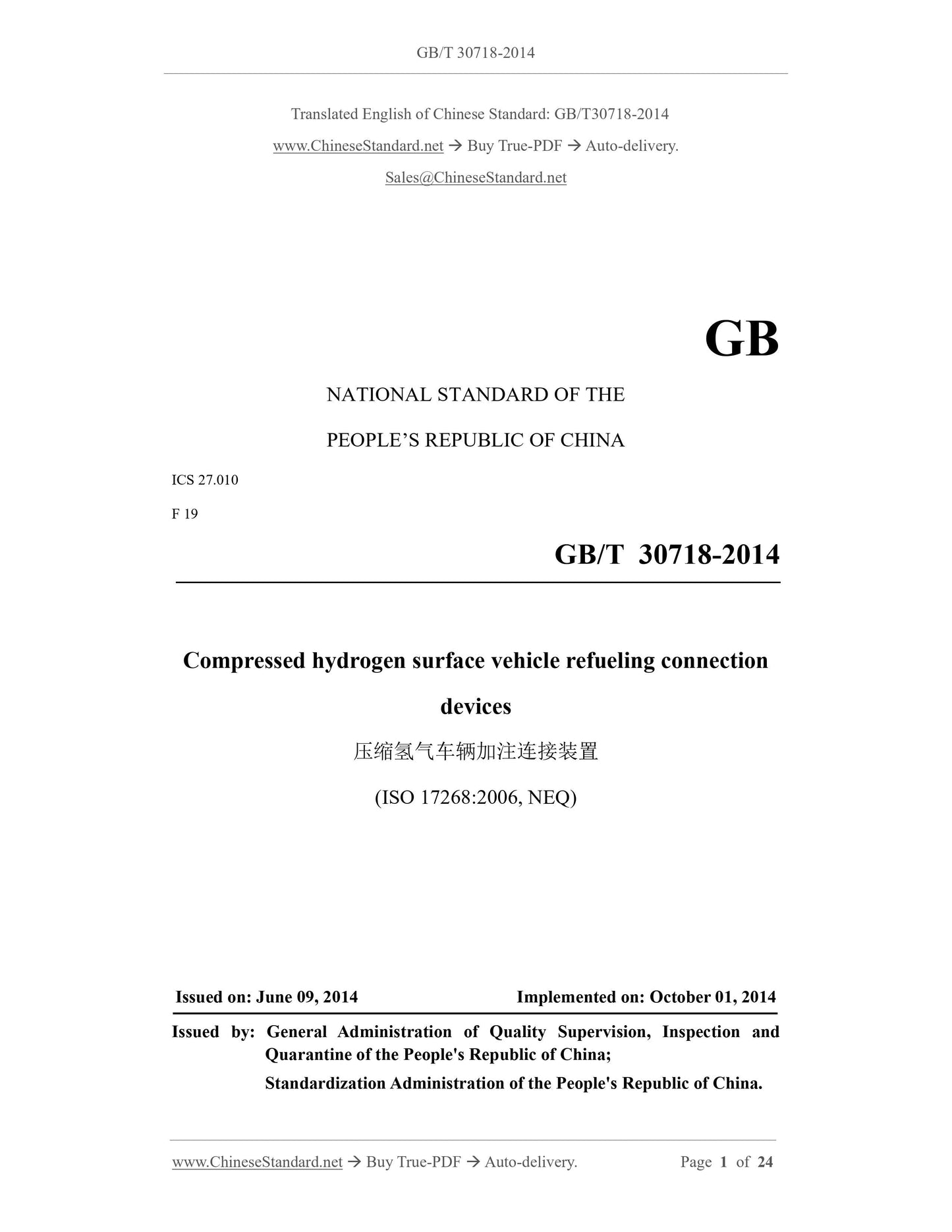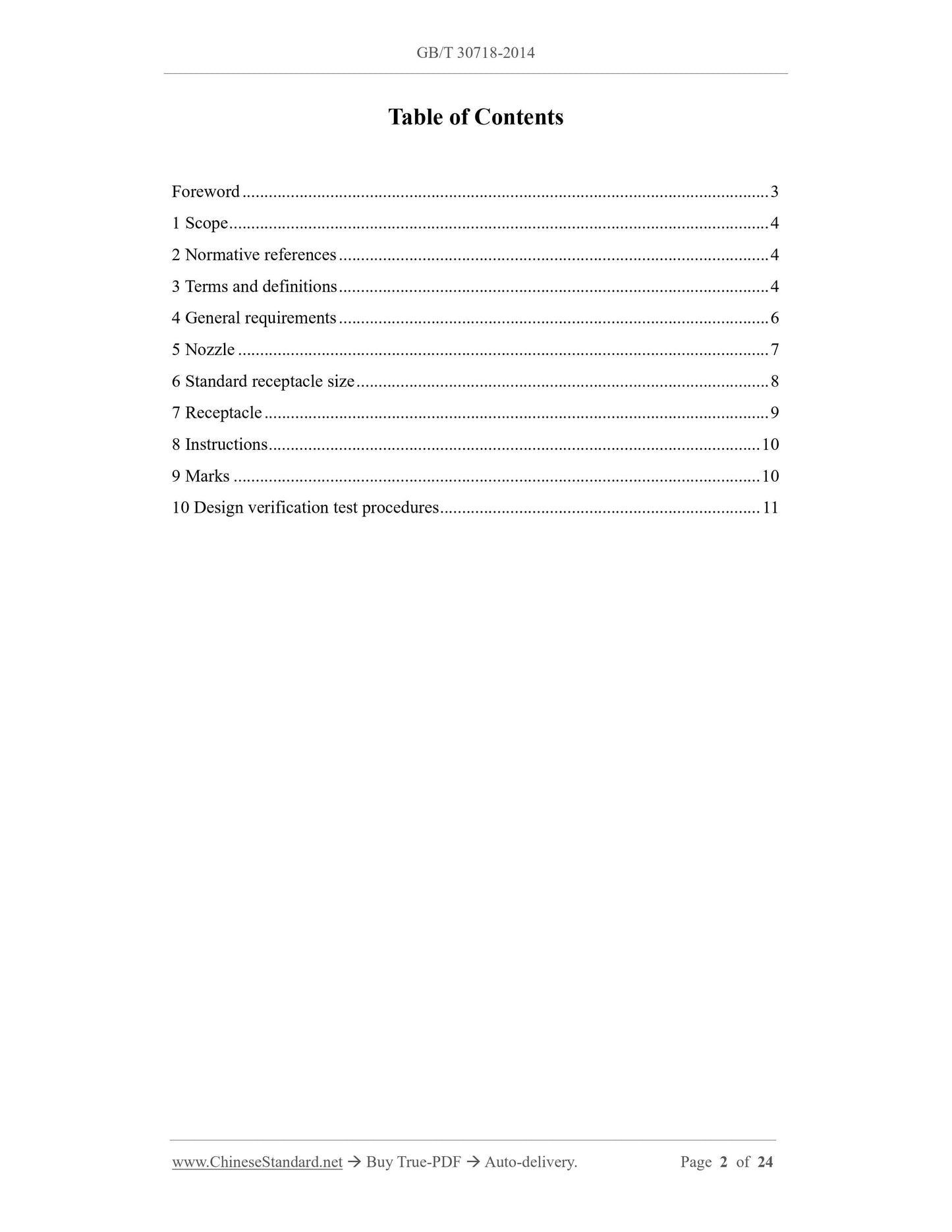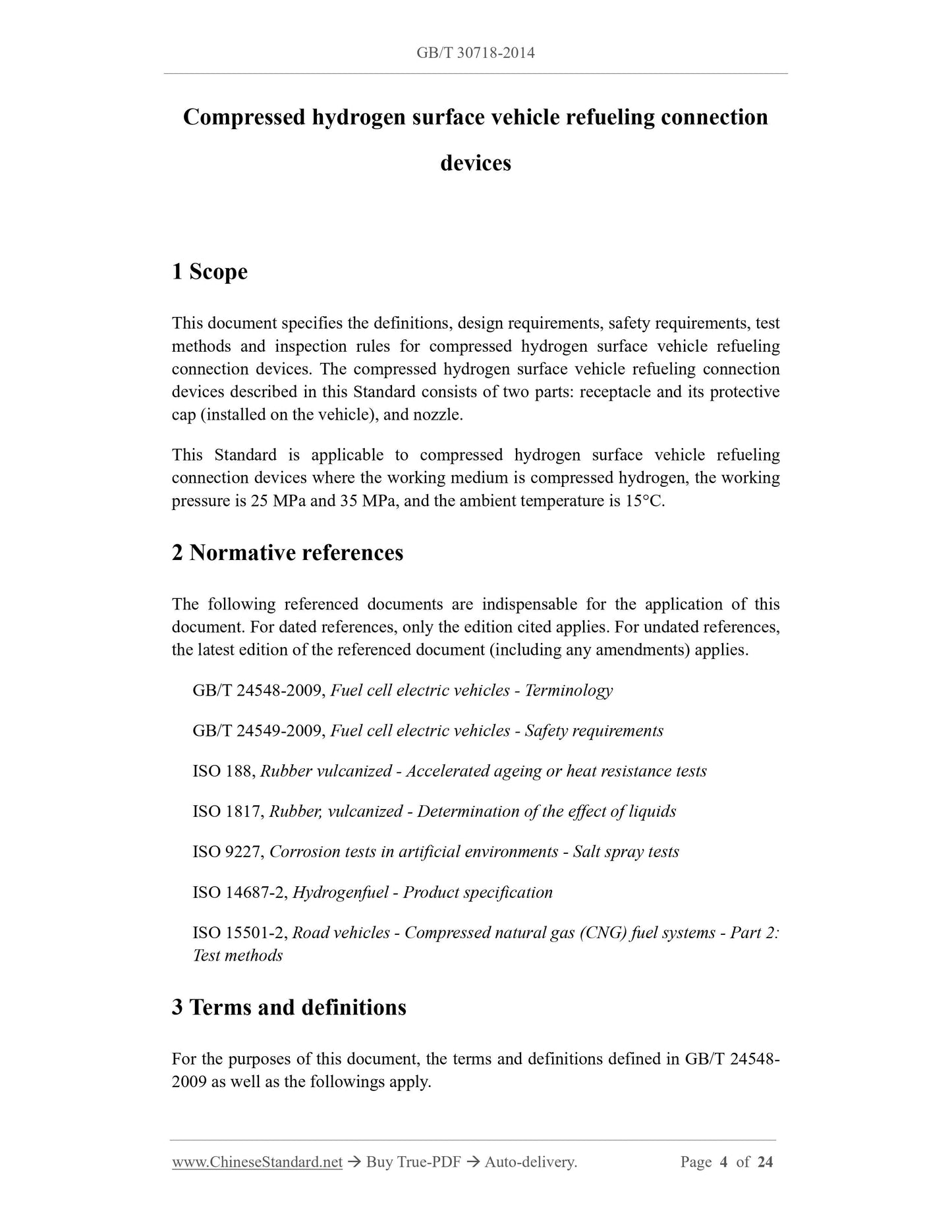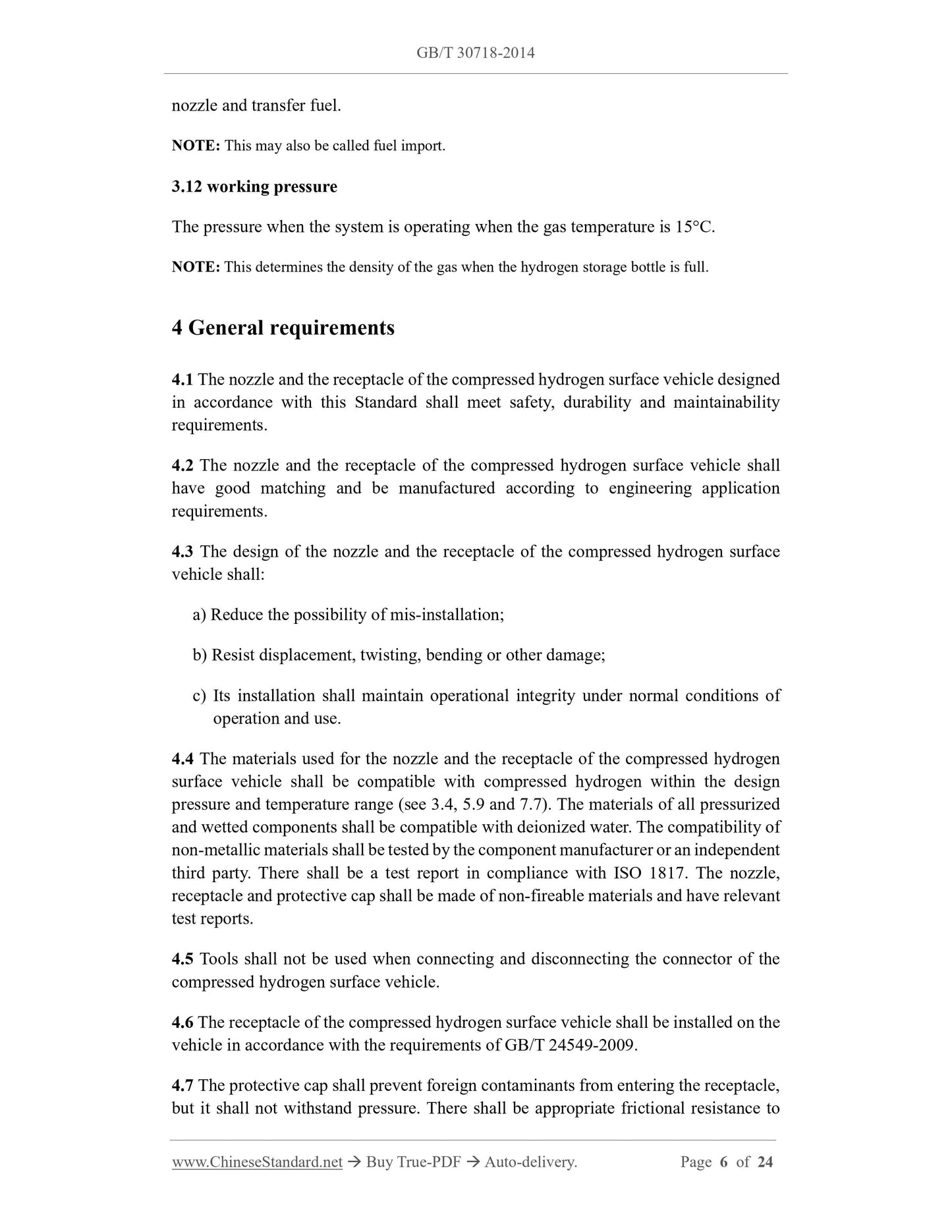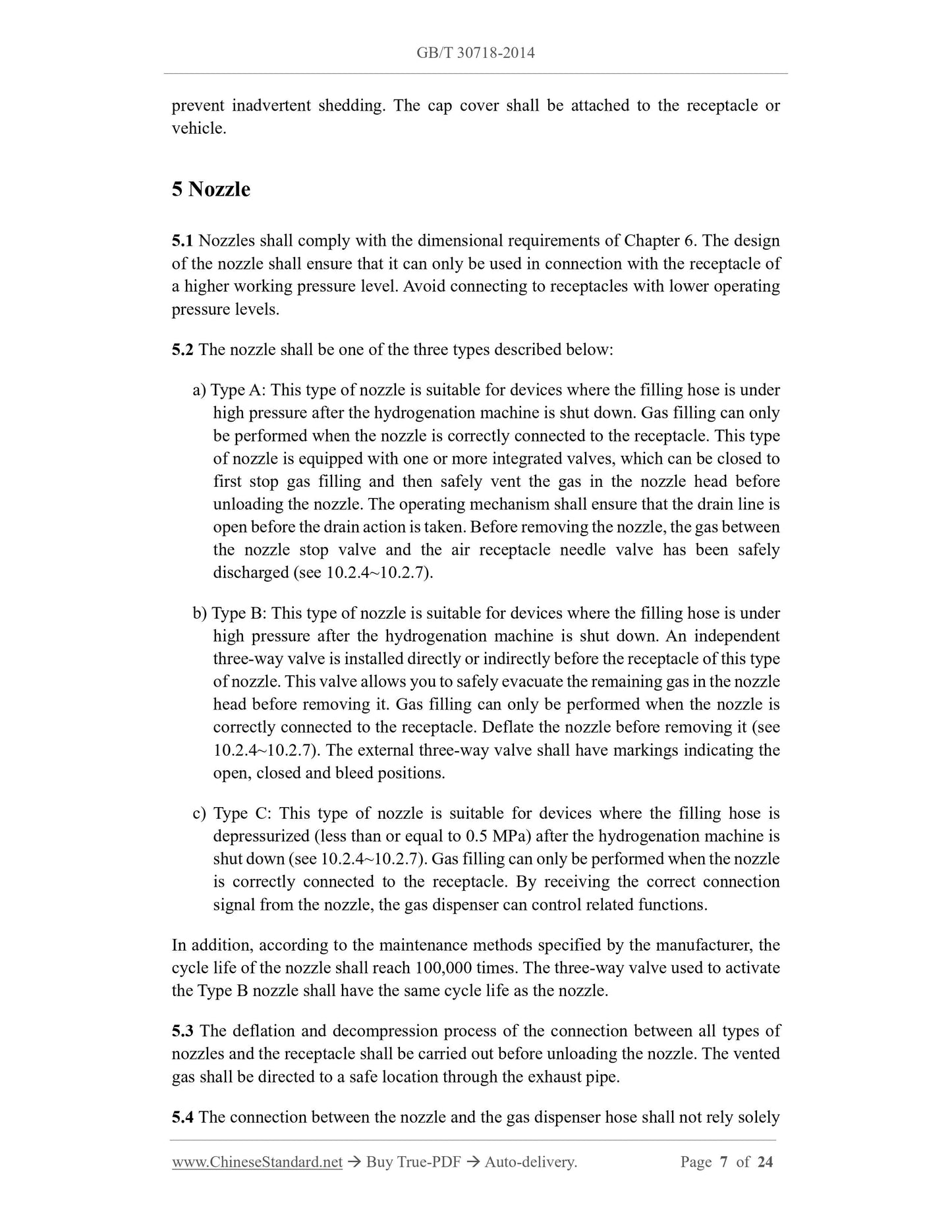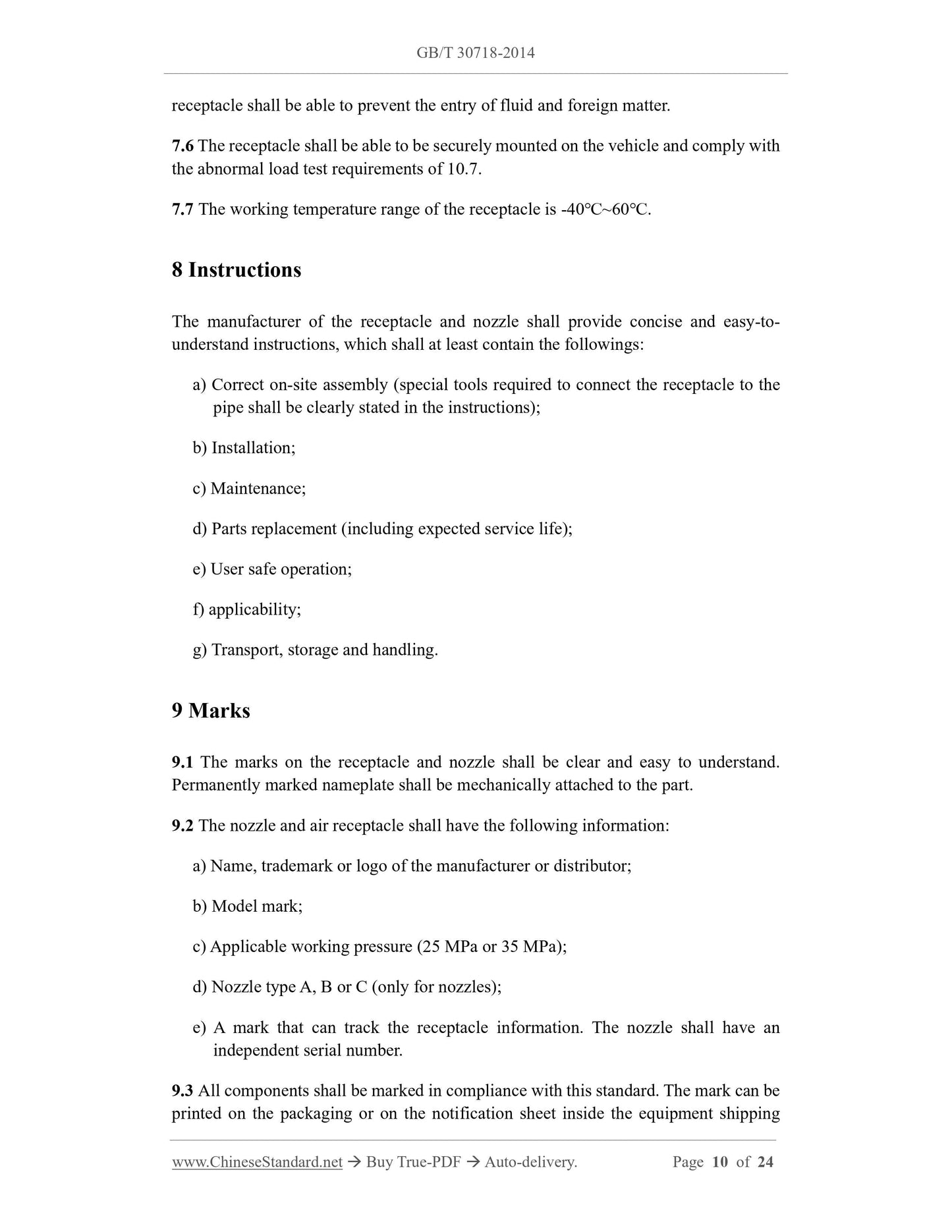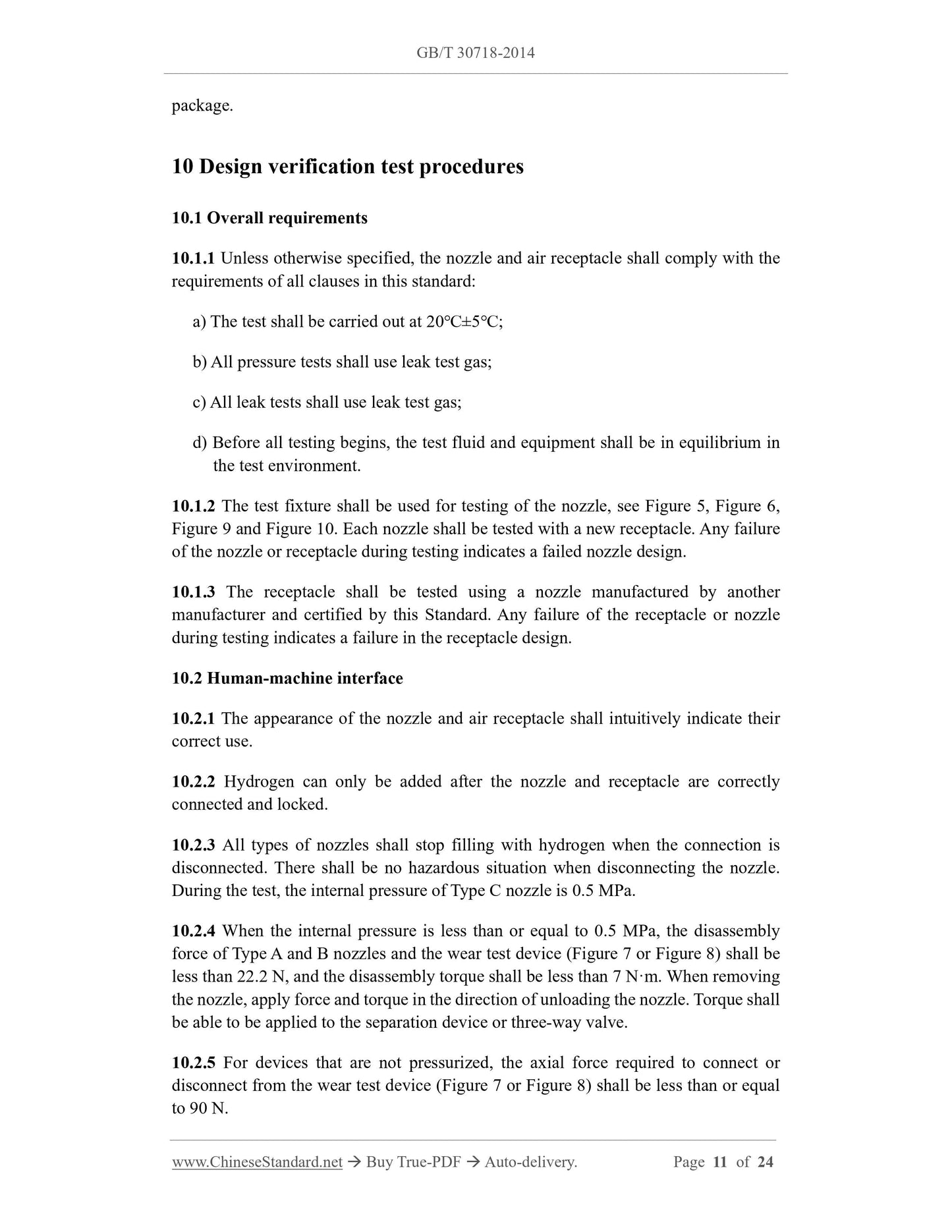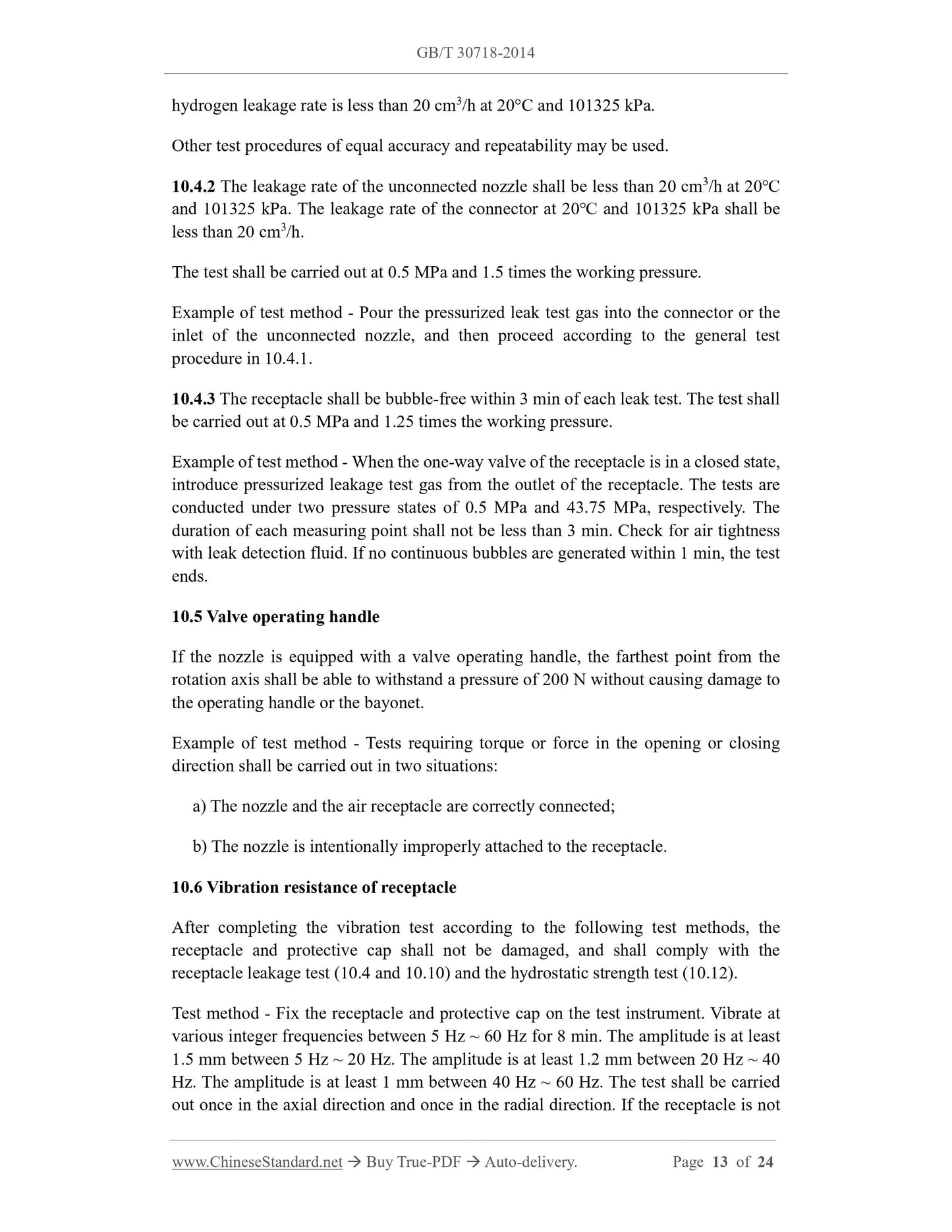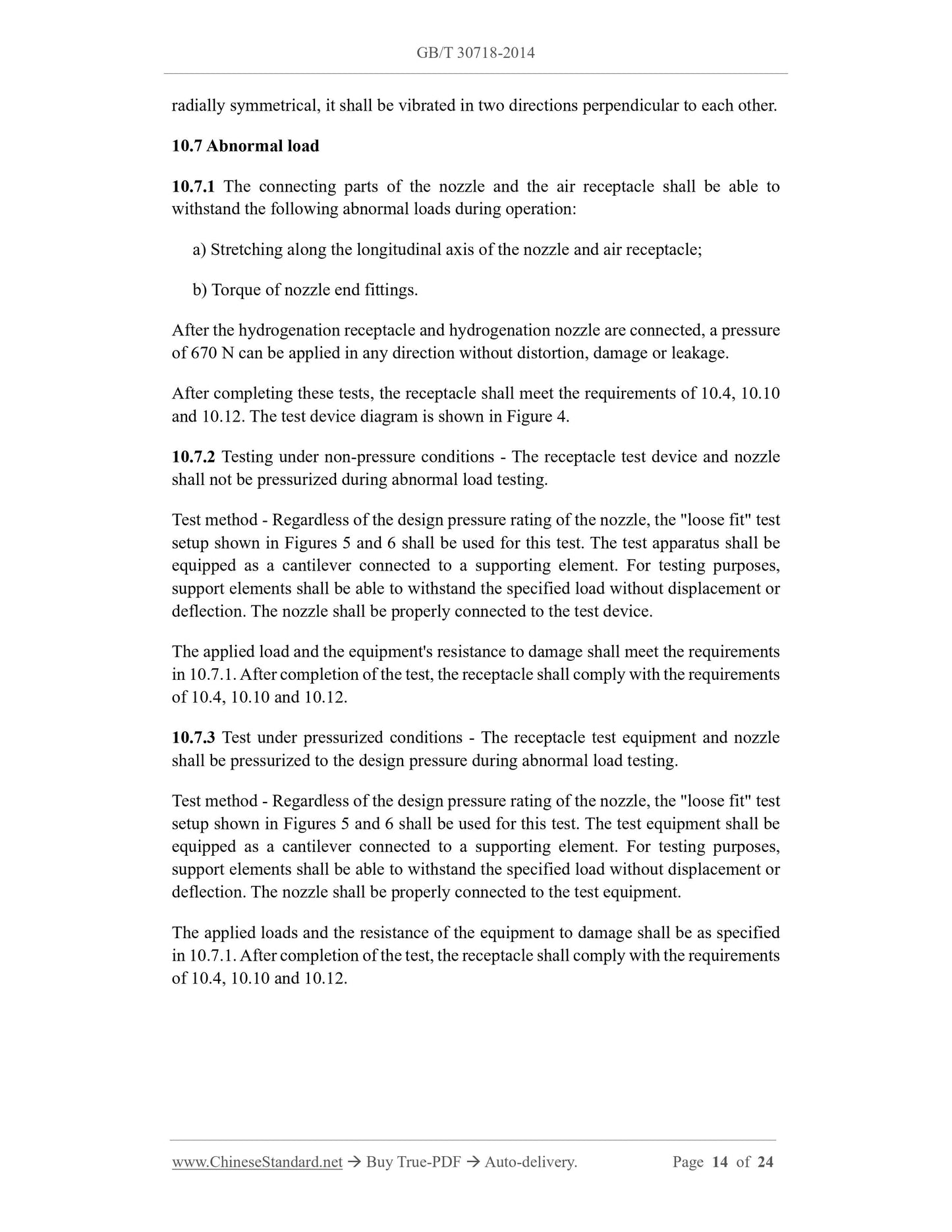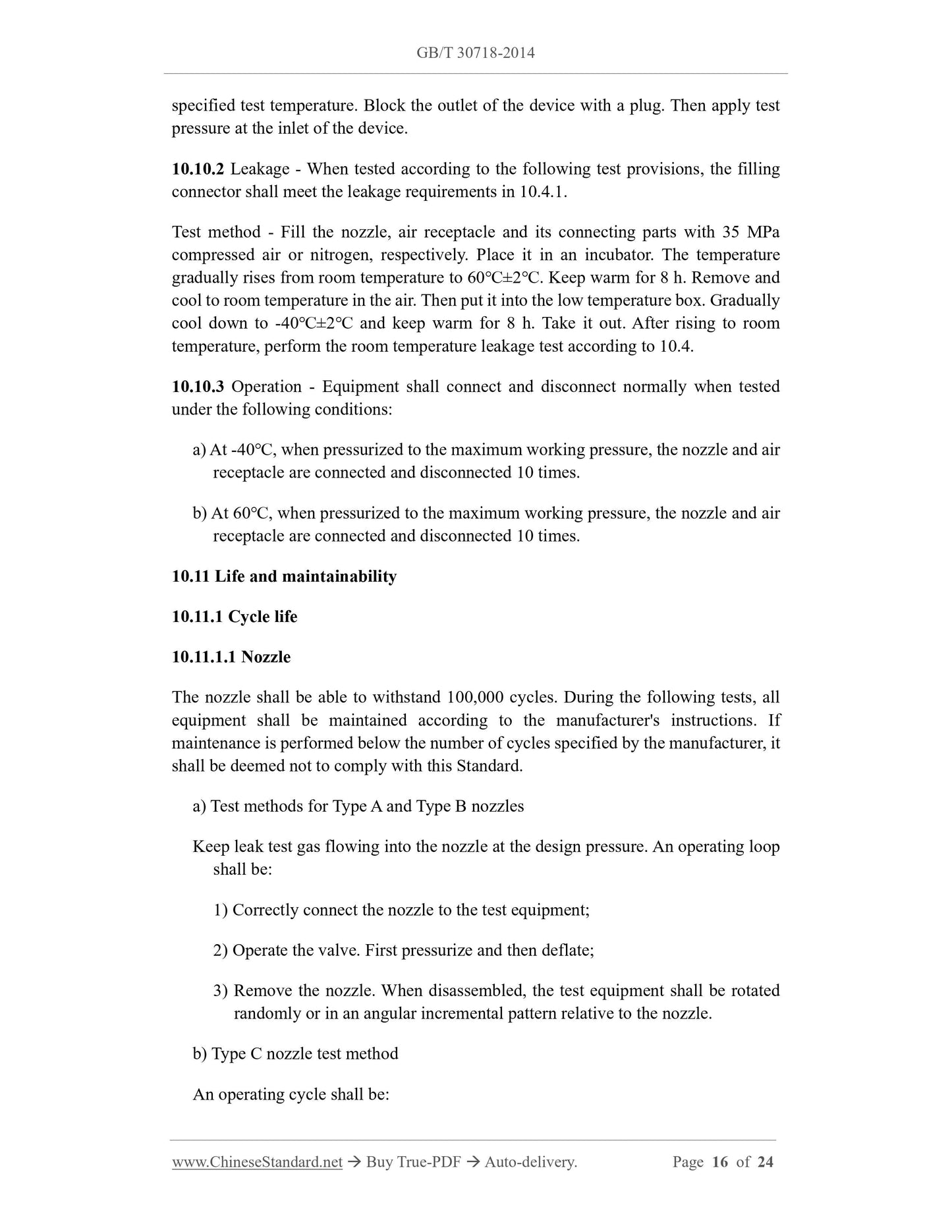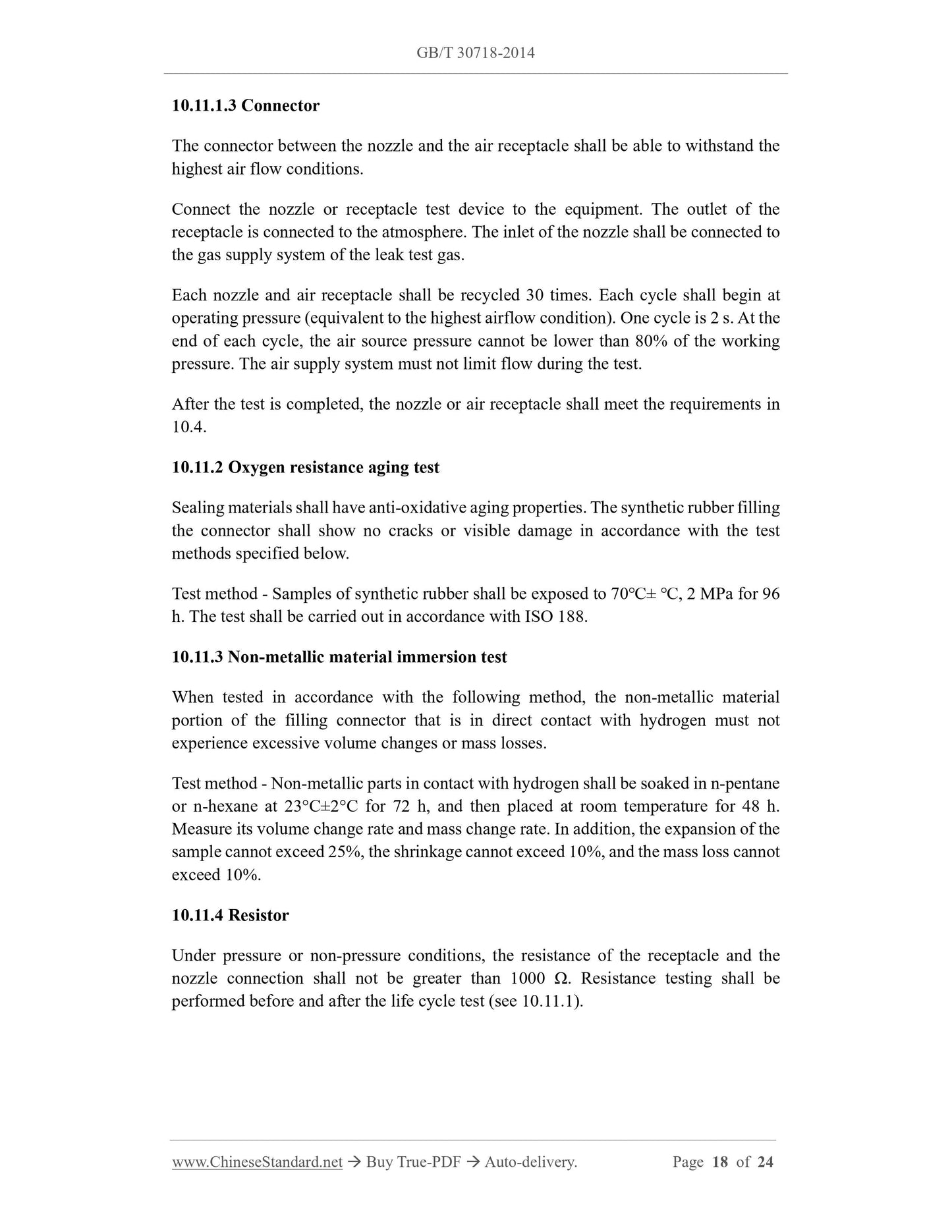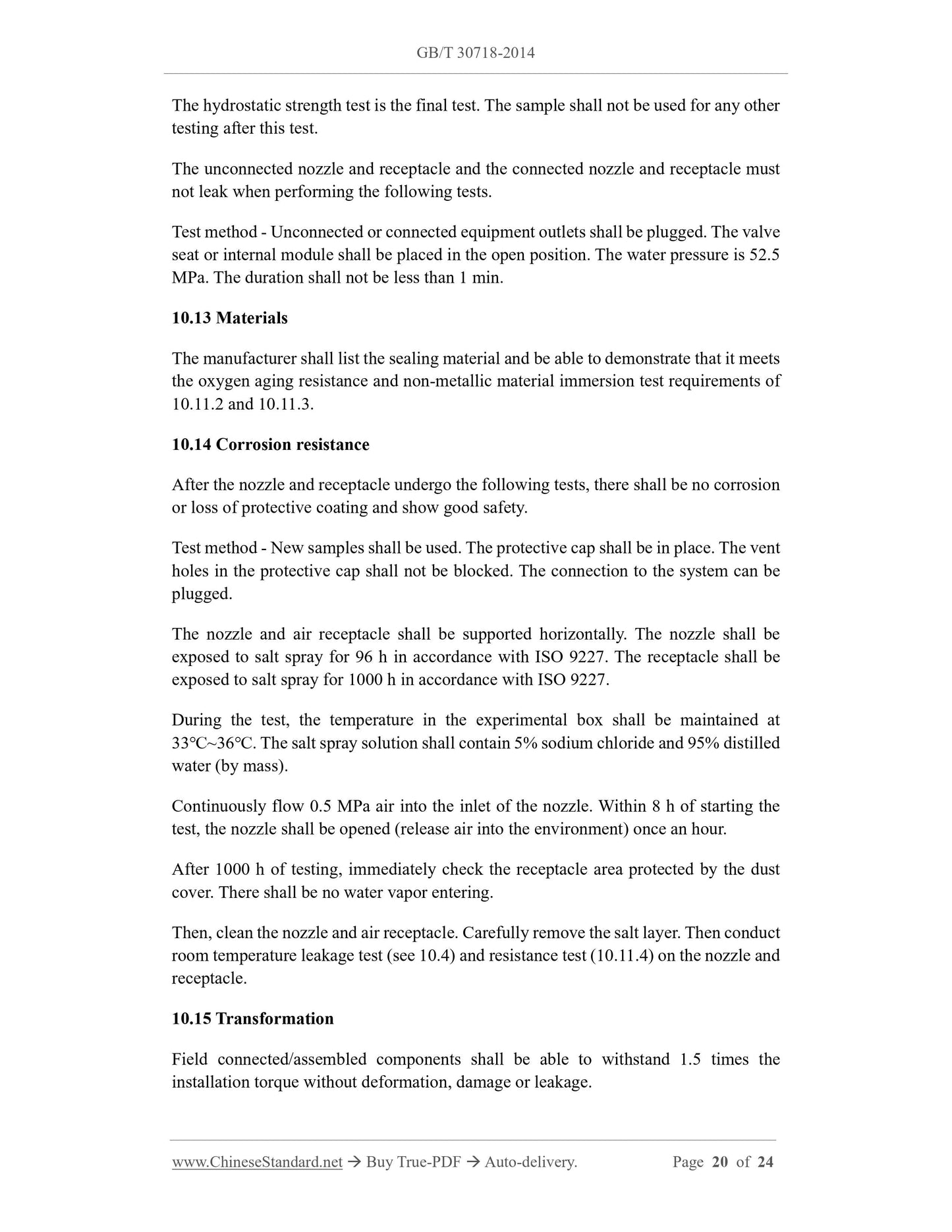1
/
of
12
www.ChineseStandard.us -- Field Test Asia Pte. Ltd.
GB/T 30718-2014 English PDF (GB/T30718-2014)
GB/T 30718-2014 English PDF (GB/T30718-2014)
Regular price
$395.00
Regular price
Sale price
$395.00
Unit price
/
per
Shipping calculated at checkout.
Couldn't load pickup availability
GB/T 30718-2014: Compressed hydrogen surface vehicle refueling connection devices
Delivery: 9 seconds. Download (and Email) true-PDF + Invoice.Get Quotation: Click GB/T 30718-2014 (Self-service in 1-minute)
Newer / historical versions: GB/T 30718-2014
Preview True-PDF
Scope
This document specifies the definitions, design requirements, safety requirements, testmethods and inspection rules for compressed hydrogen surface vehicle refueling
connection devices. The compressed hydrogen surface vehicle refueling connection
devices described in this Standard consists of two parts. receptacle and its protective
cap (installed on the vehicle), and nozzle.
This Standard is applicable to compressed hydrogen surface vehicle refueling
connection devices where the working medium is compressed hydrogen, the working
pressure is 25 MPa and 35 MPa, and the ambient temperature is 15°C.
Basic Data
| Standard ID | GB/T 30718-2014 (GB/T30718-2014) |
| Description (Translated English) | Compressed hydrogen surface vehicle refueling connection devices |
| Sector / Industry | National Standard (Recommended) |
| Classification of Chinese Standard | F19 |
| Classification of International Standard | 27.010 |
| Word Count Estimation | 19,193 |
| Date of Issue | 6/9/2014 |
| Date of Implementation | 10/1/2014 |
| Quoted Standard | GB/T 24548-2009; GB/T 24549-2009; ISO 188; ISO 1817; ISO 9227; ISO 14687-2; ISO 15501-2 |
| Adopted Standard | ISO 17268-2006, NEQ |
| Regulation (derived from) | National Standards Bulletin No. 11 of 2014 |
| Issuing agency(ies) | General Administration of Quality Supervision, Inspection and Quarantine of the People's Republic of China, Standardization Administration of the People's Republic of China |
| Summary | This Standard specifies the compressed hydrogen vehicle filling connection device definition, design requirements, safety requirements, test methods and inspection rules. This Standard compressed hydrogen vehicle filling the connecting device consists of |
Share
